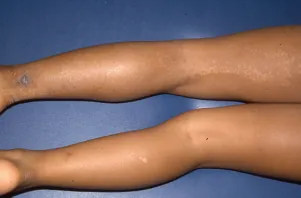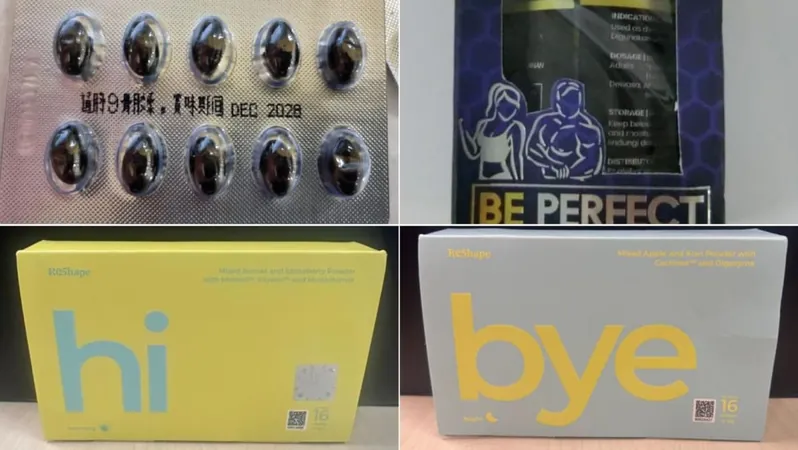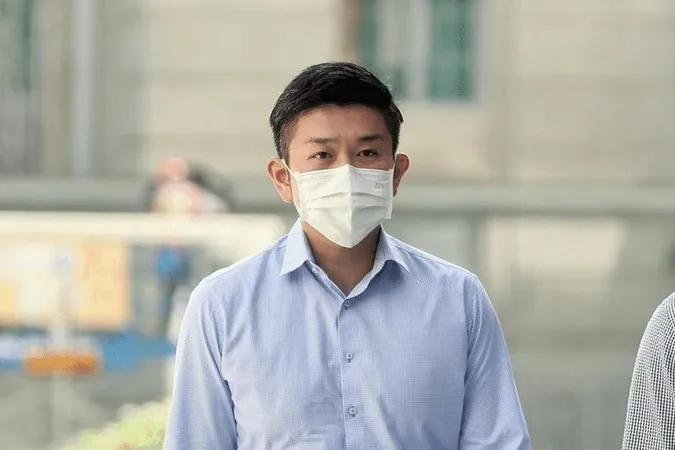
Mysterious Skin Eruption in a 9-Year-Old Girl: What You Need to Know!
2025-03-24
Author: Wei
In an intriguing medical case, a healthy 9-year-old girl developed a distinct skin eruption along the back of her left thigh and leg. Over the course of three weeks, hypopigmented papules, measuring between 2 to 3 mm, appeared in a striking linear pattern that followed the so-called lines of Blaschko. Notably, these lesions caused no symptoms and remarkably resolved on their own after 4 to 5 months without any medical intervention.
Diagnosis: Lichen Striatus (LS)
The diagnosis for this unique condition is Lichen Striatus (LS), a benign skin disease predominantly seen in children aged 4 months to 15 years. LS manifests as inflammatory papules that can be hypopigmented or occasionally pink and purple. The name "Blaschko lines" is drawn from the German dermatologist Alfred Blaschko, who identified these invisible lines across the skin, which certain dermatological conditions, like LS, tend to follow in their presentation.
Understanding Lichen Striatus
LS typically presents with an abrupt onset of shiny papules that can appear unilaterally along limbs and the neck, creating a characteristic linear pattern. These lesions tend to coalesce into continuous patches over days to weeks, primarily affecting the extremities, though they can occasionally occur on other body parts. While the exact cause of LS remains unclear, there are indications that viral infections, such as those associated with COVID-19, varicella, and influenza, as well as certain vaccines, might trigger autoimmune responses leading to its occurrence.
Differentiating LS from Other Conditions
When assessing skin lesions, it's essential to distinguish LS from other conditions with similar presentations. Linear lichen planus is similar but generally features intensely itchy, violaceous papules. In contrast, inflammatory linear verrucous epidermal nevus appears at birth and is associated with significant itching. Other possible diagnoses include Incontinentia pigmenti, which involves multisystem manifestations, and rare cases of linear cutaneous lupus erythematosus, which require histopathological confirmation.
Treatment Pathway
Fortunately, LS usually resolves spontaneously, although the lesions can take anywhere from 6 months to 2 years to completely disappear. While residual scarring and hypopigmentation may sometimes remain, treatment can be considered for pruritic cases. Low-potency steroids like hydrocortisone cream, as well as immunomodulators such as tacrolimus, may help lessen symptoms and duration if necessary.
Conclusion: Early Diagnosis is Crucial
In this particular case, early recognition of Lichen Striatus ensured that the child did not undergo unnecessary treatments, allowing the lesions to resolve naturally. Such cases highlight the importance of awareness and understanding of pediatric dermatological conditions to prevent misdiagnosis and inappropriate treatments.
Stay tuned for more intriguing medical cases and to learn about the lesser-known skin conditions affecting our youth!




 Brasil (PT)
Brasil (PT)
 Canada (EN)
Canada (EN)
 Chile (ES)
Chile (ES)
 Česko (CS)
Česko (CS)
 대한민국 (KO)
대한민국 (KO)
 España (ES)
España (ES)
 France (FR)
France (FR)
 Hong Kong (EN)
Hong Kong (EN)
 Italia (IT)
Italia (IT)
 日本 (JA)
日本 (JA)
 Magyarország (HU)
Magyarország (HU)
 Norge (NO)
Norge (NO)
 Polska (PL)
Polska (PL)
 Schweiz (DE)
Schweiz (DE)
 Singapore (EN)
Singapore (EN)
 Sverige (SV)
Sverige (SV)
 Suomi (FI)
Suomi (FI)
 Türkiye (TR)
Türkiye (TR)
 الإمارات العربية المتحدة (AR)
الإمارات العربية المتحدة (AR)